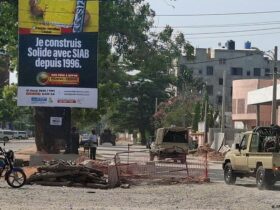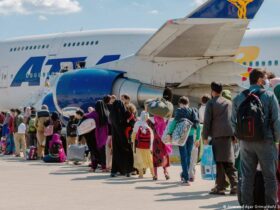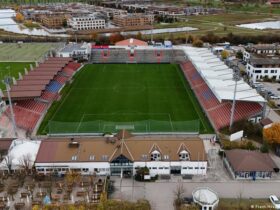On the morning of 1st January in the western Kanchanaburi province of Thailand, Silva Kumar supervised the cremation of 106 skulls and bones – the remains of Tamil laborers who died 80 years ago while building a railway for Japan -occupied army. .
Silva Kumar, the son of a survivor, stood before the formal fire.
The Buddhist ceremony marked a longer recognition of those who were forgotten in the graves, their suffering was erased from history.
Silva reported that the remains were being detected during a construction project near the governor’s office in Kanchanburi, highlighting a painful past.
“Of the 500 bones discovered in 1990, 106 were handed over [Jeath War Museum] Silva stated that the archeology department of Silpcorn University, while the rest was cremated by a Chinese foundation, “Silva said.
Silva, Malaysian and president of Indians in the Bangkok organization, said the initiative matches the planned closure of the museum in April.
Silva’s father was one of the remaining people, and his memories of cruel circumstances led Silva to personally led the initiative.
Under Japanese rule, Asian laborers were seen as spending – their suffering became unaffected, and their deaths were ignored.
Between 1942 and 1945, about a quarter million Romusha – Japanese Words for Asian workers – were forced to work on Railways which were spread from Thailand to Myanmar during the Japanese occupation of Southeast Asia in the Second World War. .
Although promised promised, they were under cruel labor instead. Many people died of malnutrition, illness and enthusiasm, their bodies were left in the graves.
While the pain of the 12,000 concerned prisoners of the war, which was with them, is well documented, an estimated 90,000 Asian laborers who have lost their lives have forgotten to a great extent.
Asian centers are forced to work under extreme conditions
The 415 km (258-mile) Railway was designed to connect Bangkok to Rangoon, Myanmar in the east for Japanese military supply lines. The project is later called “Death Railway”, which became infamous for its cruel working conditions.
While the affiliated power was extremely suffering, Romusha, who defeated him, faced worse situations.
The royal Japanese army planned the Railways as a strategic military route. Many workers from Malaya and Java were cheated with good wils promises, only under forced laboratory under extreme conditions.
Cholera, dysentery and malaria were largely. They were very weak who were often beaten – or just left to die.
“Railways were difficult to cut and supply through coarse forests,” said JJ Carvaki, a retired American experienced and amateur historian.
“Everyone faced, all had malaria, all had dysentery, and all experienced malnutrition to some extent. Pows had organizations, discipline and military structure, so they could take care of the bags. Uncreated Asian Workers, this is too much, “Heer. Said.
Romasha’s records are rare.
Karwaki told DW, “Japanese ensured that every physical record was destroyed immediately after the war. In September, in two weeks between surrender and formal ceremony, he allegedly eliminated everything related to Asian laborers. Decided. “
“They felt an obligation for Pows to preserve those records and hand over them to the Allies,” said.
Bringing romusha out of the shadow
An attempts are now being formally made to accept the contribution of Asian Consults, with a group of Tamil cultural advocates, to install a Nadukal, or Tamil Heroes Stone in the main war graveyard in Kanchenburi.
“Nadukal is a symbol of respect for Tamil workers who died unjustly,” said Kumuta N.
“They were forgotten in history. This is a small step to give them dignity.”
Official recognition has slowed down. While the War War Memors exist for all the friendly countries, some respect some Romusha in Thailand.
Thai Sarkar focuses on promoting Kanchanburi as a tourist center, which is famous by the 1957 Oscar winning film “The Bridge on the River Quai”, much less in expanding Romusha’s historical documentation. Interest is shown.
Volunteers work to detect the past
But the increasing number of volunteers is working to highlight the forgotten sections of the railway. Many sites have overtaken the forest, and the remains of labor camps have disappeared.
Teams made up of community members, are using satellite imagery and historical accounts to detect the remains of railway, labor camps and tomb sites. The work is slow and laborious, but they believe that this death is important for preserving the complete history of the railway.
“We find pieces, rusty equipment, railway spikes, pieces of history,” a local, who maps the railway with a local friends and team of enthusiasts.
“Tourists come here to see the bridge, but they don’t know [the full] History. Now, most people do not know where the railway is, or it is beyond Nampatok station in Kanchanburi.
Even after decades, Romusha remains a large extent invisible. Their remains have been found in large -scale tombs, often open from accidents during construction projects or land excavation.
Due to no official records, many of these remains have cremated or reborn the bee without proper acknowledgment.
Silva Kumar said, “This is about respecting the complete history of this railway and the thesis is about men, children and women to ensure that.”
For advocates like Silva, it is just the beginning of the fight to ensure that Romusha is remembered with others.
As a smoke flow on the Kanchanburi Buddhist cemetery, it acts as a final farewell and is a long -term recognition for Tamil Romusha.
Edited by: Keith Walker






Leave a Reply